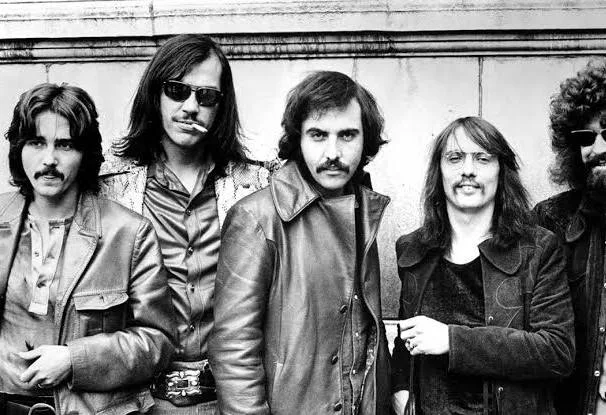Steppenwolf’s “Magic Carpet Ride”:
Origins and Inspiration
- Released in 1968 on the album The Second, “Magic Carpet Ride” was Steppenwolf’s second big hit after Born to Be Wild. It reached #3 on the Billboard Hot 100 and became a staple of late-60s rock.
- The song started with a riff by bassist Rushton Moreve, and John Kay wrote the lyrics after buying a new high-end stereo system. The opening line, “I like to dream, right between the sound machine,” refers to that stereo, symbolizing music as a portal to escape reality.
- https://www.youtube.com/watch?v=420hDMG3uec
- https://en.wikipedia.org/wiki/Magic_Carpet_Ride_(Steppenwolf_song)
Musical Style
- Its unique blend of acid rock, hard rock, and psychedelic pop, along with the iconic 20-second distorted guitar intro, left a lasting mark on the music industry, influencing later hard rock and heavy metal bands.
Song Meaning
- At its core, the song is about freedom, imagination, and transcendence. The “magic carpet” is a metaphor for a journey into fantasy, powered by music and dreams. In many cultures, a magic carpet symbolizes escape and adventure, and in this song, it represents the journey into the mind that music can offer.
- Many interpret it as an invitation to escape the mundane, explore consciousness, and embrace creativity. Some listeners associate it with the psychedelic culture of the late 1960s, including references to drugs, though John Kay said the lyrics were mainly inspired by music and personal reflection.
Cultural Impact
- The song became an anthem for the counterculture movement, symbolizing liberation and adventure.
- It appeared in the 1968 film Candy and has been featured in numerous movies, commercials, and even in Star Trek: First Contact as Zefram Cochrane’s launch music.
Opening Lines
- Theme: Escapism through music and imagination.
- The reference to a “sound machine” suggests that music is the gateway to a dreamlike state, where reality fades and creativity takes over.
Chorus (“Magic Carpet Ride”)
- Theme: Freedom and transcendence.
- The “magic carpet” is a metaphor for a journey beyond ordinary life—whether through art, love, or altered consciousness. It reflects the late-60s counterculture ideal of breaking boundaries.
Middle Verses
- Theme: Sharing the experience.
- The lyrics invite someone to join the ride, symbolizing connection and shared exploration. It’s about opening up to new perspectives together.
Closing Sections
- Theme: Adventure and unpredictability.
- The imagery emphasizes spontaneity and the thrill of venturing into unknown mental or emotional landscapes.
Overall, the song is a jubilant celebration of music as a transformative force, offering escape, imagination, and unity. It’s deeply tied to the psychedelic era’s ethos of liberation and exploration, inspiring listeners to embrace the power of music in their own lives.
